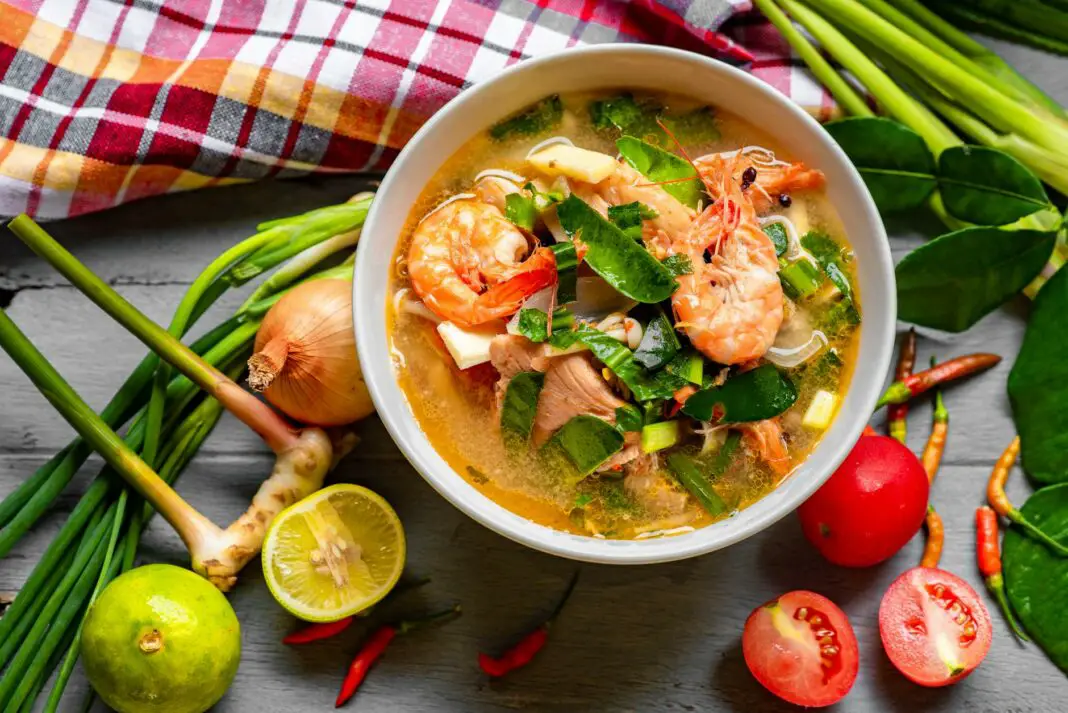Are you feeling the wanderlust itch? Picture a place where colorful markets burst with vibrant produce, tantalizing aromas waft through the air, and each dish carries a story of culture and tradition. Thailand is that enchanting destination. With its rich culinary landscape, it not only beckons travelers but also invites food enthusiasts to uncover the mysteries behind its tantalizing flavors. One question inevitably arises: What’s the secret ingredient in authentic Thai dishes? Let’s dive into this fascinating topic and explore what makes Thai cuisine a true masterpiece.
By the end of this post, you will have a comprehensive understanding of Thailand’s culinary art, the cultural significance behind its dishes, and the key elements that elevate these flavors. So grab your forks and embark on this exciting food journey!
Table of Contents
- Introduction to Thai Cuisine
- Understanding the Flavor Profile
- Key Ingredients in Thai Dishes
- Traditional Thai Cooking Techniques
- Cultural Significance of Thai Food
- Tips for Cooking Authentic Thai Dishes at Home
- Recommended Resources
- Frequently Asked Questions
Introduction to Thai Cuisine
Thai cuisine stands out in the global culinary arena, captivating taste buds with its exquisite balance between flavors and textures. Its core philosophy revolves around the harmony of sweet, sour, salty, and spicy elements, often referred to as the four pillars of Thai flavor. This intricate balance enchants diners, transporting them to the bustling streets of Bangkok or serene beaches of Phuket with every bite.
When pondering over the secret ingredient in Thai dishes, many may initially think of the well-known fish sauce or the aromatic basil. However, the heart of authentic Thai cuisine goes far deeper. The harmony in flavors achieved through precise combinations and cooking methods forms a profound connection with Thailand’s rich history and cultural diversity. As you explore these layers, you’ll unravel a treasure trove of culinary wisdom that makes Thai food a magnificent representation of its people.
Understanding the Flavor Profile
In every authentic Thai dish, a symphony of flavors awaits your palate. The spectacular variety in spice levels, from mild to fiery, showcases the region’s diverse culinary techniques. Central to this balance are the sweet notes from sugar or fresh fruits, contrasted beautifully by tangy lime or tamarind. Saltiness often plays a crucial role, achieved through the use of fish sauce or soy sauce, creating an umami explosion. At the same time, herbs and chilies add depth and spatial complexity, pushing the journey further into a thrilling culinary experience.
The best Thai dishes bring forth a captivating exploration of textures as well. Think of the crunchy freshness of vegetables, the creamy richness of coconut milk, and the fluffy tenderness of rice. Pairing these elements strategically creates an engaging dish, inviting you to indulge further. With a vibrant palette of colors mirroring the diversity of flavors, each meal tells a story, inviting you deeper into the world of Thai gastronomy.
Key Ingredients in Thai Dishes
To unlock the secrets behind authentic Thai dishes, one must become familiar with the staple ingredients that grace its kitchens. It begins with the ubiquitous rice, a base that supports many meals, typically served alongside curry or stir-fried vegetables. Next comes the aromatic world of herbs, including coriander, Thai basil, and lemongrass, which contribute a fresh and invigorating aspect to the cuisine.
Moreover, let’s not forget about garlic and galangal, whose bold profiles set the stage for depth and richness. Fish sauce, an iconic staple with its pungent and salty essence, infuses every dish with a unique vitality. Coconut milk acts as an exquisite counterpart, providing creaminess and a hint of sweetness to dishes like Tom Kha Gai. Additionally, soy sauce, chillies, and tamarind work together to form a rich tapestry of flavors. Each ingredient harmonizes with others to create warm, exciting meals people can’t resist.
Traditional Thai Cooking Techniques
When considering what makes Thai food unique, the traditional cooking techniques cannot be overlooked. Common methods include stir-frying, steaming, and boiling. Stir-frying is not just about speed; it emphasizes the quick cooking of fresh ingredients to nonchalantly vibrate with textures and flavors, allowing for the preservation of nutrients.
Grilling and roasting also play significant roles in Thai cuisine, infusing dishes with smoky undertones that only fire can impart. The process of making curry pastes involves grinding fresh ingredients into paste, releasing essential oils and flavors. Each technique finds its importance in creating authentic tastes, propelling home cooks and chefs alike into an aromatic adventure. Engaging in these cooking methods will assure you experience the authentic essence of Thai dishes.
Cultural Significance of Thai Food
Diving deeper into Thai food reveals a wealth of cultural significance surrounding its dishes. Food in Thailand is a source of pride and an expression of love and hospitality. Sharing meals is an essential part of familial and communal bonding, emphasizing unity and respect. In social gatherings, it’s common to find large platters shared among friends and family, encouraging everyone to partake and enjoy together.
Certain dishes carry historical connotations as well; take Pad Thai, for instance, a dish introduced during times of political transformation, that symbolizes unity. Festivals and religious ceremonies often come with traditional foods, where the preparation becomes a ritual of gratitude. Hence, understanding Thai cuisine transcends the plate, intertwining it within the fabric of the nation’s social and cultural life.
Tips for Cooking Authentic Thai Dishes at Home
For those eager to bring the flavors of Thailand into their own kitchens, consider embarking on a culinary journey using readily available ingredients. Start with a well-stocked pantry that boasts essential items such as fish sauce, coconut milk, and a variety of chilies. Familiarize yourself with quick cooking techniques like stir-frying and steaming to master the key principles that define Thai cooking.
Experiment with fresh herbs by incorporating them into salads or cooked dishes early in your culinary journey. Embrace the art of balance; taste as you cook and adjust flavors accordingly, focusing not just on individual ingredients but rather the harmony they create together. As you navigate the vibrant world of Thai cuisine, don’t shy away from asking for tips or recipes from those who have experienced it firsthand. Engaging with the community not only nurtures your skills but also creates connections to the rich tradition of Thai cooking.
Recommended Resources
If you’re eager to enhance your knowledge of Thai cuisine further, numerous resources are available. Cookbooks by renowned chefs such as David Thompson and recipes available from Thai culinary schools online offer exceptional insight. Food blogs dedicated to authentic Thai dishes provide fresh perspectives, while cooking classes—whether in person or virtual—allow you to immerse yourself deeply in this culinary art form. The more you explore, the more flavors and techniques you’ll understand, leading to an even richer appreciation of this delightful cuisine.
Frequently Asked Questions
What is the most popular Thai dish?
While tastes vary, Pad Thai is widely recognized for its unique blend of flavors and textures, making it a signature dish many seek out when exploring Thai cuisine.
Is Thai food always spicy?
Not necessarily! Thai cuisine accommodates different spice levels, allowing diners to choose dishes that suit their palates, while several dishes offer the same complexity of flavors without overwhelming heat.
What are common ingredients found in Thai soup?
Common ingredients in Thai soup include fresh herbs, garlic, lemongrass, and chilies, creating a robust base. Coconut milk often adds creaminess, while shrimp or chicken contribute substance.
Can I recreate Thai dishes at home?
Absolutely! With a few staple ingredients and some experimentation, home cooks can effectively recreate delectable Thai dishes, allowing everyone to enjoy them in the comfort of their homes.
Your Culinary Adventure Awaits: Dive into Authentic Thai Cuisine
As you ponder over the flavors and techniques discussed above, cultivating an appreciation for authentic Thai dishes is just the beginning. Allow yourself to experiment and explore, forging a deeper connection with this vibrant cuisine. Whether on a trip to Thailand or cooking within your kitchen, the richness of each bite beckons you to continue your culinary adventure!
Image Credit: Pexels





